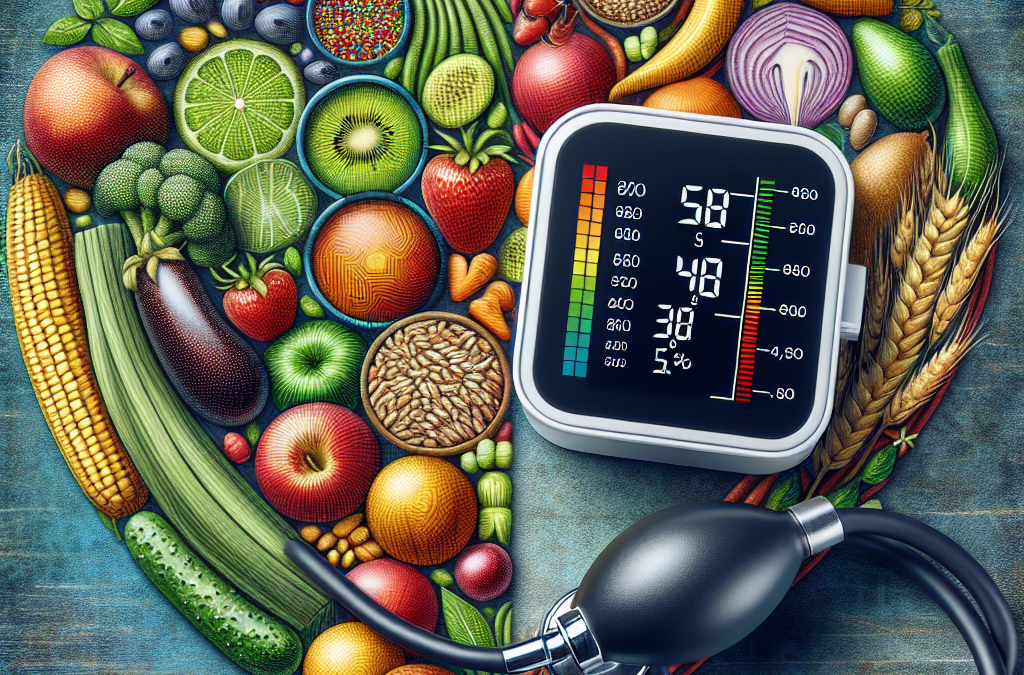Understanding Blood Pressure and Whole Foods
What is Blood Pressure?
So, let’s start with the basics—blood pressure is basically the force that your blood exerts against the walls of your arteries. When this pressure is consistently too high, it can lead to some serious health issues like heart disease or stroke. I’ve learned to appreciate the role that dietary choices play in keeping this regulated.
With that said, blood pressure is measured in two numbers: systolic pressure over diastolic pressure. Now, anyone who’s been to the doctor knows this and some of you may have even glanced at a blood pressure monitor yourself. Knowing where you stand is crucial for heading in the right direction.
In my experience, understanding these numbers has helped me realize how small tweaks in my diet could lead to notable changes. This is where whole foods come into the picture, making it easier to maintain healthy blood pressure levels.
The Role of Whole Foods in Diet
What Are Whole Foods?
Whole foods are essentially nature’s bounty in their most untouched form. Think fruits, vegetables, whole grains, nuts, seeds, and legumes—these bad boys are packed with nutrients. I remember transitioning from processed foods to whole foods and the difference was like night and day!
One thing that gets me excited about whole foods is their high content of fiber, which helps regulate everything from blood sugar to cholesterol, not to mention blood pressure too! It’s like giving my body what it truly needs instead of just filling it up.
Plus, getting creative with whole foods can be fun! I love exploring new recipes and different combinations that make each meal an exciting adventure in taste and health.
Nutrients Essential for Blood Pressure Control
Magnesium and Potassium
Magnesium and potassium, oh my! These minerals are real superheroes when it comes to blood pressure. Magnesium helps blood vessels relax, while potassium counters sodium’s bad effects, helping to lower blood pressure.
Incorporating foods rich in these nutrients—like spinach, bananas, and avocados—can quickly improve your intake. Trust me, my love affair with a good avocado and some sautéed spinach has really changed the game for my health!
Essentially, turning my plate into a rainbow filled with these nutrients ensures I’m treating my body to the best. A healthy mind and body connection really starts from what’s on our plates, wouldn’t you agree?
How Whole Foods Impact Overall Health
Whole Foods and Weight Management
One surprise I found while diving into whole foods was how they played a role in weight management. When you eat whole foods, you’re generally consuming fewer empty calories. This helped me shed some of those pesky pounds without sacrificing flavor!
Get an Amazing Discount on the Best Certified Organic Whole Food Supplement!
I’ve noticed a direct link between my weight and my blood pressure readings. Less body weight means less strain on the heart and arteries, which translates to a healthier blood pressure. It’s all connected in this beautiful circle of life!
Feeling lighter and healthier has motivated me to keep exploring more whole food options. More greens, more colors—who doesn’t want to be a health rock star?
Incorporating Whole Foods into Your Lifestyle
Simple Steps for Transitioning
If you’re thinking about transitioning to whole foods, take it slow and steady. Start by replacing one meal a day with a whole foods meal—maybe a bright salad or a hearty grain bowl. Take it from me, don’t rush it!
You can also educate yourself on reading labels. I used to overlook ingredients, but now I check what’s in my food. You’d be amazed at how many hidden sodium bombs are lurking in processed food!
Finally, explore local farmers’ markets or even start your own garden. It’s genuinely rewarding to see your food grow, plus you know it’s fresh! And trust me, fresh produce tastes way better than anything supermarket-processed.
Frequently Asked Questions
1. How quickly can I see results in blood pressure from whole foods?
Depending on individual circumstances, many people report noticing changes in their blood pressure within weeks of making dietary changes, especially by reducing sodium and increasing whole foods.
2. Are there specific whole foods I should focus on for blood pressure?
Yes! Focus on fruits like bananas and berries, veggies like leafy greens, and healthy fats from nuts and avocados—they’re all good choices!
3. Can whole foods help prevent hypertension?
Absolutely! Incorporating whole foods into your diet is a preventive measure that can help maintain healthy blood pressure levels and reduce the risk of hypertension.
4. What role does sodium play in blood pressure?
Sodium can contribute to high blood pressure by retaining fluid in the body, putting extra strain on blood vessels. Reducing sodium intake while increasing whole foods can be very beneficial.
5. Is it difficult to maintain a whole food diet?
It can be challenging at first, but with planning and preparation, it becomes a lifestyle choice rather than a diet. Embrace it, and it can be very rewarding!




